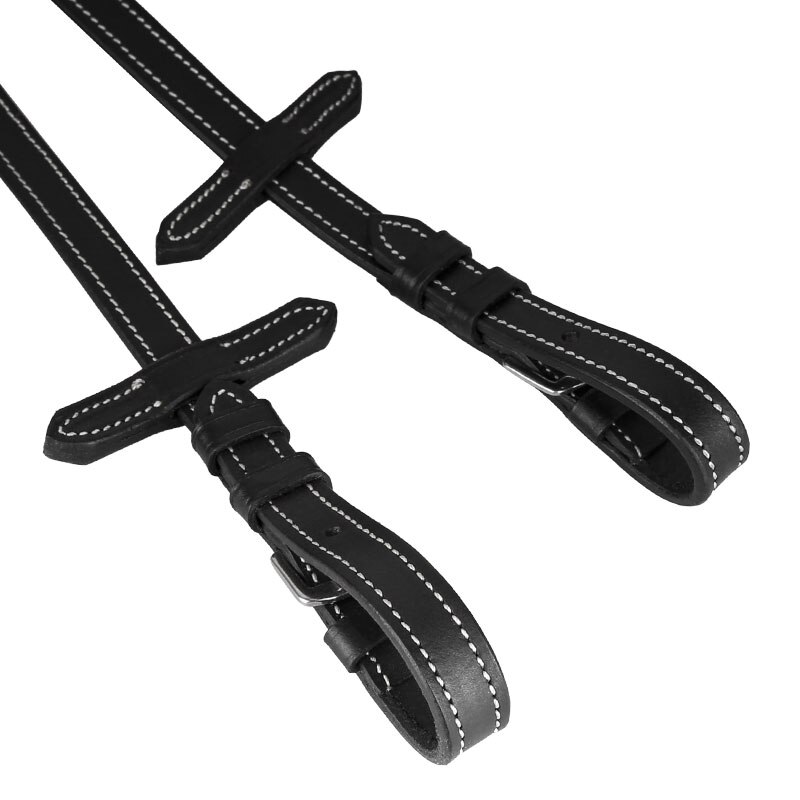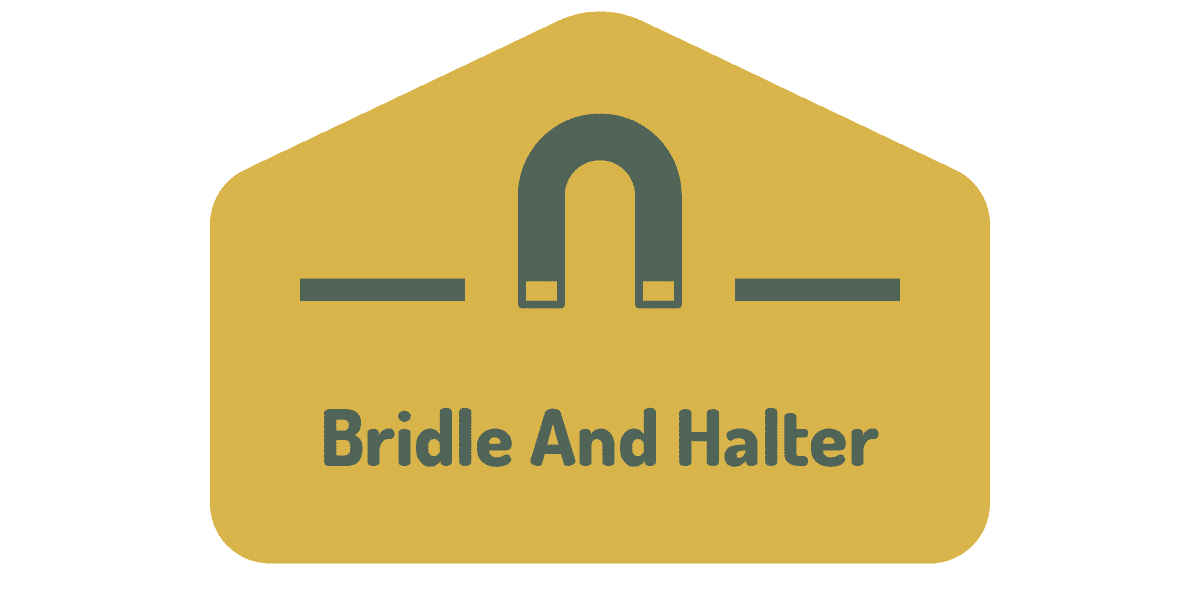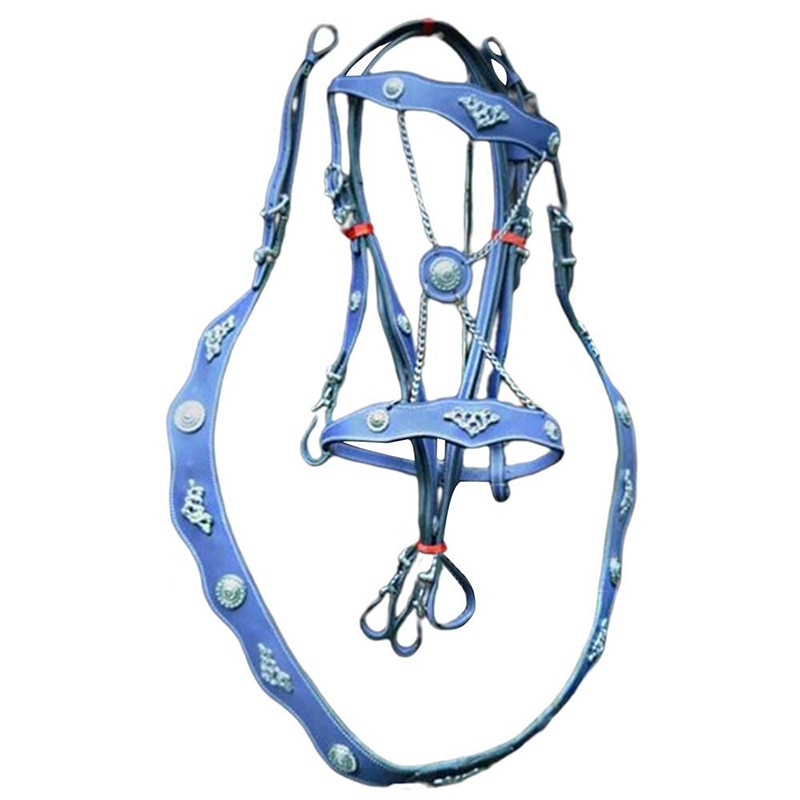
These are fundamental pieces of equestrian equipment that serve both practical and aesthetic purposes. Whether you’re an experienced rider, a horse owner, or searching for the perfect gift for an equestrian enthusiast, understanding the different types, materials, and styles of bridles and halters is essential. In this comprehensive guide, we’ll explore everything from selecting the right bridle or halter to styling tips and creative gift ideas.
Understanding Bridles and Halters
Both are essential tools in horse riding and handling, but they serve different purposes:
- Bridle: A bridle is a piece of riding equipment used to direct and control a horse. It typically includes the bit, reins, and headstall, and is used during riding.
- Halter: A halter is used to lead or tie up a horse when it is not being ridden. It is generally simpler in design and is used for handling and basic control.
Types of Bridles
There are several types of bridles, each designed for different disciplines and levels of control:
1. English Bridles
English bridles are commonly used in various disciplines such as dressage, jumping, and eventing. They are known for their sleek and refined appearance.
- Snaffle Bridle: The most basic type, featuring a simple bit and reins. Ideal for beginners and general riding.
- Double Bridle: Features two bits and two sets of reins for more refined control, typically used in advanced dressage.
- Figure-8 Bridle: Also known as a grackle bridle, this design helps prevent the horse from crossing its jaw, often used in jumping and cross-country.
- Drop Noseband Bridle: Offers additional control by applying pressure on the horse’s nose, used in dressage and training.
2. Western Bridles
Western bridles are used in Western riding disciplines like reining, cutting, and trail riding. They tend to be more rugged and often feature decorative elements.
- One-Ear Bridle: Features a single ear loop and is commonly used in Western riding for its simplicity and ease of use.
- Browband Bridle: Includes a browband that goes across the horse’s forehead, providing stability and support.
- Bosal Bridle: A type of hackamore that uses a noseband instead of a bit, offering a gentler form of control.
- Show Bridle: Elaborately decorated with silver and other embellishments, used in Western show competitions.
3. Specialty Bridles
These bridles are designed for specific needs or disciplines and can vary in complexity and design.
- Bitless Bridle: Offers control without a bit, often used for horses with sensitive mouths or for certain training techniques.
- Endurance Bridle: Designed for long-distance riding, featuring lightweight and durable materials like nylon or biothane.
- Iberian Bridle: Traditional bridles used in Spanish and Portuguese riding, often featuring intricate leatherwork and decorations.
Types of Halters
Halters are primarily used for leading and handling horses and come in various designs based on material and purpose:
1. Leather Halters
Leather halters are a classic choice, known for their durability, comfort, and timeless appearance.
- Show Halter: A high-quality halter often used in shows and competitions, made from premium leather with decorative stitching or embellishments.
- Everyday Halter: Durable and comfortable, suitable for daily use and handling.
- Breakaway Halter: Designed with a safety feature that allows the halter to break if the horse gets caught, preventing injury.
2. Nylon Halters
Nylon halters are popular for their strength, affordability, and variety of colors.
- Adjustable Halter: Features adjustable straps for a custom fit, often with padding for added comfort.
- Padded Halter: Includes soft padding on the noseband and crownpiece, providing extra comfort for the horse.
- Reflective Halter: Made with reflective materials for better visibility in low light conditions, ideal for safety during evening or early morning handling.
3. Rope Halters
Rope halters are lightweight, easy to use, and often favored for training purposes.
- Training Halter: Designed with thinner ropes and knots placed at pressure points to aid in training and control.
- Natural Horsemanship Halter: Used in natural horsemanship practices, promoting gentle communication and training with the horse.
- Decorative Rope Halter: Features colorful ropes or decorative knots, often used in casual or trail riding settings.
How to Choose the Right Bridle or Halter
Choosing the right bridle or halter involves considering the horse’s comfort, the intended use, and the rider’s style preferences. Here are some tips to guide your selection:
1. Fit and Comfort
- Sizing: Ensure the bridle or halter fits the horse properly, with adjustable features to accommodate different head sizes and shapes.
- Padding: Look for padded nosebands, browbands, and crownpieces to enhance comfort and prevent chafing.
- Material: Consider the material based on the horse’s needs; leather offers durability and comfort, while nylon provides strength and versatility.
2. Purpose and Discipline
- Riding Discipline: Choose a bridle that suits the specific riding discipline, whether it’s dressage, jumping, Western riding, or endurance.
- Handling Needs: Select a halter based on its intended use, whether for daily handling, training, or showing.
- Control Level: Determine the level of control needed; for example, a double bridle offers more precision for advanced riders, while a basic snaffle bridle is suitable for general riding.
3. Style and Design
- Aesthetic Preferences: Consider the rider’s style preferences, from the sleek lines of an English bridle to the decorative elements of a Western show bridle.
- Customization: Look for options that allow for personalization, such as engraved nameplates on leather halters or custom colors in nylon halters.
- Matching Sets: For a cohesive look, consider matching the bridle or halter with other tack, such as saddle pads, reins, or breastplates.
4. Durability and Maintenance
- Leather Care: Leather bridles and halters require regular cleaning and conditioning to maintain their suppleness and longevity.
- Nylon Care: Nylon halters are low maintenance but should be checked regularly for signs of wear, such as fraying or weakened stitching.
- Rope Care: Rope halters should be cleaned as needed, especially after muddy or dusty rides, and stored properly to prevent tangling or damage.
Styling Ideas for Bridles and Halters
These can be both functional and fashionable, adding to the overall look of the horse and rider. Here are some ideas for styling these essential accessories:
1. Coordinating Tack Sets
- Matching Colors: Choose bridles and halters that match or complement the colors of your saddle pad, boots, and other tack for a coordinated look.
- Themed Sets: Create themed tack sets for specific events or seasons, such as using silver-accented bridles for shows or bright, reflective halters for winter riding.
2. Show-Ready Elegance
- Polished Leather: For a sleek, show-ready appearance, ensure your leather bridle is polished and conditioned, with gleaming metal fittings.
- Decorative Elements: Add decorative browbands or conchos to your bridle for a touch of elegance during competitions or exhibitions.
- Custom Nameplates: Personalize your halter with a custom-engraved nameplate, adding a professional and polished touch.
3. Casual and Trail Riding
- Comfort and Practicality: Opt for comfortable, easy-to-maintain materials like nylon or rope for casual rides or trail adventures.
- Bright Colors: Choose halters in bright, eye-catching colors for visibility and style during outdoor riding sessions.
- Weather-Resistant Tack: For trail riding, select tack that can withstand different weather conditions, such as water-resistant leather or quick-drying nylon.
4. Personalized Touches
- Engraving: Add a personalized touch with engraved nameplates or monograms on leather bridles or halters.
- Custom Colors: Choose custom color combinations that reflect your personal style or match your horse’s coat color.
- Decorative Accents: Incorporate decorative accents like beads, conchos, or rhinestones to create a unique and stylish look.
Gift Ideas Featuring Bridles and Halters
Bridles and halters make for thoughtful and practical gifts for horse lovers, riders, and equestrian enthusiasts. Here are some creative gift ideas:
1. Personalized Leather Halters
- Engraved Nameplates: Gift a high-quality leather halter with a custom-engraved nameplate featuring the horse’s name or the owner’s initials.
- Show-Ready Halter: Choose a beautifully crafted show halter with intricate stitching or decorative accents for a special occasion gift.
- Matching Lead Rope: Pair the halter with a matching leather lead rope for a complete and elegant set.
2. Complete Bridle Sets
- Custom Bridles: Gift a custom-made bridle designed specifically for the horse’s measurements and the rider’s preferences.
- Show Bridles: Select a show bridle with intricate details, such as silver embellishments or decorative browbands, perfect for competitions.
- Training Bridles: For a rider focused on training, consider a practical yet stylish training bridle made from durable materials.
3. Themed Gift Sets
- Western Riding Set: Create a themed Western riding set with a one-ear bridle, matching breastplate, and a coordinating saddle pad.
- Dressage Set: Gift a dressage enthusiast a set that includes a double bridle, matching reins, and a monogrammed saddle cover.
- Trail Riding Kit: Put together a trail riding kit with a lightweight endurance bridle, reflective halter, and a handy saddlebag.
4. Grooming and Care Accessories
- Leather Care Kit: Pair a leather bridle or halter with a complete leather care kit, including saddle soap, conditioner, and polishing cloths.
- Tack Cleaning Supplies: Include essential cleaning supplies like tack sponges, brushes, and a storage bag for easy maintenance.
- Storage Solutions: Gift a stylish bridle bag or halter hanger, perfect for organizing and protecting tack in the barn or during transport.
Caring for Bridles and Halters
Proper care and maintenance are essential to extend the life of bridles and halters, ensuring they remain in good condition and comfortable for the horse:
1. Leather Care
- Cleaning: Regularly clean leather with saddle soap and warm water to remove dirt and sweat.
- Conditioning: Condition the leather with a suitable conditioner to keep it supple and prevent cracking.
- Storage: Store leather tack in a cool, dry place, using bridle hooks or hangers to maintain their shape and avoid creasing.
2. Nylon and Rope Care
- Washing: Wash nylon halters and rope halters with mild soap and water, then air dry to prevent mold or mildew.
- Checking for Wear: Regularly inspect nylon and rope tack for signs of wear, such as fraying or weakened stitching, and replace as needed.
- Storage: Store nylon and rope tack in a dry area, away from direct sunlight to prevent fading or weakening of the material.
Conclusion
These are essential pieces of equestrian equipment that blend functionality with style. Whether you’re looking for the perfect bridle for your riding discipline or a stylish halter for everyday use, understanding the different types, materials, and design options is key to making the right choice. Additionally, these accessories make for thoughtful and practical gifts for any horse lover. By following the tips and ideas outlined in this guide, you can select and care for bridles and halters that not only serve their purpose but also enhance the overall equestrian experience.


